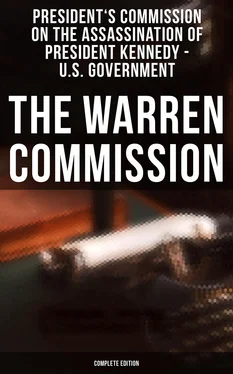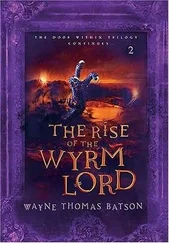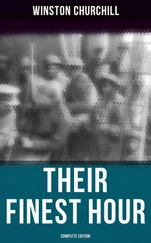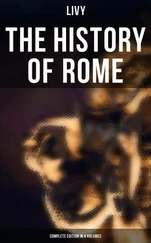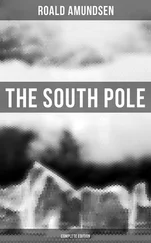P-4, I don't know what that is.
P-5, I did see this photograph with Lee—he showed it to me after the incident.
Mr. Rankin. When your husband showed you the photograph P-5, did he discuss with you what that showed, how it related to the Walker shooting?
Mrs. Oswald. No. I simply see that this is a photograph of a railroad. It was in that book. And I guessed, myself, that it had some sort of relationship to the incident.
Mr. Rankin. I offer in evidence photographs P-3 and P-5 on this exhibit.
The Chairman. They may be admitted, and take the next number.
(The document referred to was marked Commission Exhibit No. 4, and received in evidence.)
Mr. Rankin. Now, I shall hand you Exhibit 6 for identification and ask you if you recognize those two photographs.
Mrs. Oswald. Yes. These photographs I know, both of them. They seem to be identical. Walker's house.
Mr. Rankin. When did you first see those exhibits?
Mrs. Oswald. After the incident.
Mr. Rankin. About the same time that you saw the other pictures of the Walker house that you have described?
Mrs. Oswald. Yes.
Mr. Rankin. Did your husband tell you why he had these photographs?
Mrs. Oswald. He didn't tell me, but I guessed, myself—I concluded myself that these photographs would help him in that business.
Mr. Rankin. That is the business of the shooting at the Walker house?
Mrs. Oswald. Yes.
Mr. Rankin. I offer in evidence the two photographs in this exhibit.
The Chairman. They may be admitted and take the next number.
(The documents referred to were marked Commission Exhibit No. 5, and received in evidence.)
Mr. Rankin. Before you told the Commission about the Walker shooting, and your knowledge, did you tell anyone else about it?
Mrs. Oswald. Yes, to the members of the Secret Service and the FBI.
Mr. Rankin. Did you tell your mother-in-law?
Mrs. Oswald. Yes, I also told his mother about it.
Mr. Rankin. When did you tell his mother about the incident?
Mrs. Oswald. After Lee was arrested, on Saturday—he was arrested on Friday. I don't remember when I met with his mother—whether it was on the same Friday—yes, Friday evening. I met her at the police station. From there we went to Ruth Paine's where I lived at that time. And she remained overnight, stayed overnight there. I had a photograph of Lee with the rifle, which I gave. At that time I spoke very little English. I explained as best I could about it. And that is why I showed her the photograph. And I told her that Lee had wanted to kill Walker.
Mr. Rankin. Now, turning to the period when you were in New Orleans, did you write to the Russian Embassy about going to Russia, returning to Russia at that time?
Mrs. Oswald. Yes.
Mr. Rankin. Was that about the first part of July, that you wrote?
Mrs. Oswald. Probably.
Mr. Rankin. And then did you write a second letter to follow up the first one?
Mrs. Oswald. Yes.
Mr. Rankin. I hand you Exhibit 6 for identification and ask you if that is the first letter that you sent to the Embassy. Take your time and look at it.
Mrs. Oswald. This was not the first letter, but it was the first letter written from New Orleans.
Mr. Rankin. Will you examine the photostat that has just been handed to you, and tell us whether or not that was the first letter that you wrote to the Embassy about this matter?
Mrs. Oswald. No, this is a reply to my first letter.
Mr. Rankin. Will you examine the one that you now have, and state whether that is the first letter?
Mrs. Oswald. Yes, this was the first. This was only the declaration. But there was a letter in addition to it.
Mr. Rankin. The declaration was a statement that you wished to return to the Soviet Russia?
Mrs. Oswald. Yes, about granting me a visa.
Mr. Rankin. And what date does that bear?
Mrs. Oswald. It is dated March 17, 1963.
Mr. Rankin. And did you send it with your letter about the date that it bears?
Mrs. Oswald. Yes.
I don't know—perhaps a little later, because I was not very anxious to send this.
Mr. Rankin. But you did send it?
Mrs. Oswald. Yes.
Mr. Rankin. And it might have been within a few days or a few weeks of that time?
Mrs. Oswald. Yes.
Mr. Dulles. Do we have the date of the second letter?
Mr. Rankin. I want to go step by step.
Mr. Dulles. Yes, I understand. That is not introduced yet.
Mr. Rankin. It might be confusing if we get them out of order.
Mrs. Oswald. Yes, this is the first letter.
Mr. Rankin. Now, the photostatic document that you have just referred to as being the first letter, does it bear a date?
Mrs. Oswald. Yes.
Mr. Rankin. Do you recall the date?
Mrs. Oswald. It says there the 17th of February.
Mr. Rankin. And do you know that that letter had attached to it your declaration that you just referred to?
Mrs. Oswald. Yes, it seems to me. Perhaps it was attached to the next letter. I am not sure.
Mr. Rankin. This letter of February 17 that you referred to as the first letter is in your handwriting?
Mrs. Oswald. Yes.
Mr. Rankin. Will you examine the translation into English that is attached to it and inform us whether or not that is a correct translation?
Mrs. Oswald. I can't do that, because——
Mr. Rankin. Mr. Interpreter, can you help us in that regard, and tell her whether it is a correct translation?
Mr. Krimer. If I may translate it from the English, she could check it.
Mr. Rankin. Would you kindly do that?
Mrs. Oswald. That is a quite correct translation. I didn't want to, but I had to compose some such letters.
Mr. Rankin. I offer in evidence the photostatic copy of the letter in Russian as Exhibit 6.
The Chairman. Together with the translation that is attached to it?
Mr. Rankin. Together with the translation that is attached to it as Exhibit 7.
The Chairman. It may be admitted and take the next number.
(The documents referred to were marked Commission Exhibit Nos. 6 and 7, respectively, and received in evidence.)
Mr. Rankin. I hand you again the declaration, Exhibit 8, and ask you if that accompanied the first letter, Exhibit 6, that you have referred to?
Mrs. Oswald. I don't remember whether it accompanied the first letter or the second letter with which I had enclosed some photographs and filled out questionnaires.
Mr. Rankin. I hand you Exhibit 9 and ask you if that is the second letter that you have just referred to.
Mrs. Oswald. No, this was perhaps the third. Perhaps I could help you, if you would show me all the letters, I would show you the sequence.
Mr. Rankin. I hand you Exhibit 9, dated March 8, 1963, and ask you if you can tell whether that is the letter which accompanied the declaration.
Mrs. Oswald. This is a reply from the Embassy, a reply to my first letter.
Mr. Rankin. Mr. Chairman, may we have a short recess to get the original exhibits that we have prepared, and I think we can expedite our hearing.
The Chairman. Very well. We will have a short recess.
(Brief recess.)
The Chairman. The Commission will come to order. We will proceed.
Mr. Rankin. Mrs. Oswald, we will see if we have these in proper order now.
I will call your attention to the photostats of the declaration and the accompanying papers that I shall now call Exhibit 8 to replace the references to Exhibit 8 and 9 that we made in prior testimony, and ask you to examine that and see if they were sent together by you to the Embassy.
Mrs. Oswald. I sent this after I received an answer from the Embassy, an answer to my first letter. This is one and the same. Two separate photostats of the same declaration. All of these documents were attached to my second letter after the answer to my first.
Читать дальше
